MatthewMacKay
Seed
- Messages
- 2
- Reaction score
- 1
Hi All!
I'm quite new to the hobby (and forum) and recently bought a tree that has run into some problems. I thought it may be beneficial to work through this case to see what mistakes I might have made as a beginner, and what can be learnt from this scenario.
I bought the bonsai back in April prior to winter here (Australia) but didn't check the health of the tree (big mistake), which it already had some black 'mouldy' spots on the deadwood. Being new to bonsai, I thought this might just be mould from water not drying out on the deadwood, so I monitored the soil dampness until winter. It rained a fair bit when winter came, so I adjusted the watering schedule to essentially once per week since the soil was already retaining a lot of water - if the soil felt wet, I wasn't giving it more water.
Fast forward to 2 weeks ago after a lot of rain, I noticed the live vein was extremely damp, almost mushy in texture, and the bark was peeling off. The black mouldy spots had spread, and I realised this might be a ?fungal infection. This was the moment I knew something was wrong, and I suspected the soil might be retaining too much water and the tree was at risk of root rot/further infection. We were a month into winter, and I know repotting isn't ideal during winter as the roots are at risk of being damaged by the cold, but I felt the soil was too compacted to leave alone outside in the rain - considering I don't have a greenhouse. I decided to take the bonsai inside and investigate the root system and soil. As expected, it was pot bound, the roots had no room to breathe, and the soil was compacted. Some of the roots were starting to get soft/rotten, so I cut them out.
This is where I think I made my biggest mistake, and should have acted sooner. I left the bonsai indoors to dry out, which even after 4-5 days the soil was still wet. I was concerned about leaving it outdoors in the cold and rain as it was already taking a long time to dry out. I feel that the health of the tree significantly suffered given the lack of sunlight, and should have invested in a way to give the tree light without exposing it to rain. After the 4-5 days the tips started to go brown, I panicked, made up a mostly inorganic/well draining substrate (scoria), put it in a pond basket for better aeration, and put it outside to get some sunlight. I've been monitoring it 2 times a day to see if it needs water, and it almost certainly does every day with the scoria. I've worked some 3-6mm pine bark into the mix to give it some more organic substrate, and I've treated the tree with around 1:50 diluted lime sulphur spray and then lime sulphur neat to treat the black spots on the deadwood.
The tree seems stable, but I honestly don't know for sure. I suspect the tips are still browning but very very slowly, I've got some photos to show the extent of the browning. I guess the main question is, after all of this, am I overreacting and the tree is probably fine?
Matt
I'm quite new to the hobby (and forum) and recently bought a tree that has run into some problems. I thought it may be beneficial to work through this case to see what mistakes I might have made as a beginner, and what can be learnt from this scenario.
I bought the bonsai back in April prior to winter here (Australia) but didn't check the health of the tree (big mistake), which it already had some black 'mouldy' spots on the deadwood. Being new to bonsai, I thought this might just be mould from water not drying out on the deadwood, so I monitored the soil dampness until winter. It rained a fair bit when winter came, so I adjusted the watering schedule to essentially once per week since the soil was already retaining a lot of water - if the soil felt wet, I wasn't giving it more water.
Fast forward to 2 weeks ago after a lot of rain, I noticed the live vein was extremely damp, almost mushy in texture, and the bark was peeling off. The black mouldy spots had spread, and I realised this might be a ?fungal infection. This was the moment I knew something was wrong, and I suspected the soil might be retaining too much water and the tree was at risk of root rot/further infection. We were a month into winter, and I know repotting isn't ideal during winter as the roots are at risk of being damaged by the cold, but I felt the soil was too compacted to leave alone outside in the rain - considering I don't have a greenhouse. I decided to take the bonsai inside and investigate the root system and soil. As expected, it was pot bound, the roots had no room to breathe, and the soil was compacted. Some of the roots were starting to get soft/rotten, so I cut them out.
This is where I think I made my biggest mistake, and should have acted sooner. I left the bonsai indoors to dry out, which even after 4-5 days the soil was still wet. I was concerned about leaving it outdoors in the cold and rain as it was already taking a long time to dry out. I feel that the health of the tree significantly suffered given the lack of sunlight, and should have invested in a way to give the tree light without exposing it to rain. After the 4-5 days the tips started to go brown, I panicked, made up a mostly inorganic/well draining substrate (scoria), put it in a pond basket for better aeration, and put it outside to get some sunlight. I've been monitoring it 2 times a day to see if it needs water, and it almost certainly does every day with the scoria. I've worked some 3-6mm pine bark into the mix to give it some more organic substrate, and I've treated the tree with around 1:50 diluted lime sulphur spray and then lime sulphur neat to treat the black spots on the deadwood.
The tree seems stable, but I honestly don't know for sure. I suspect the tips are still browning but very very slowly, I've got some photos to show the extent of the browning. I guess the main question is, after all of this, am I overreacting and the tree is probably fine?
Matt
Attachments
-
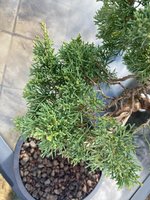 449445608_1153987842539414_3294393100952314913_n.jpg301.1 KB · Views: 111
449445608_1153987842539414_3294393100952314913_n.jpg301.1 KB · Views: 111 -
 449317927_1013515040301937_1052494750953537263_n.jpg309.2 KB · Views: 91
449317927_1013515040301937_1052494750953537263_n.jpg309.2 KB · Views: 91 -
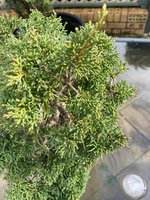 449845891_1520833408825509_8351456726477168627_n.jpg322.8 KB · Views: 80
449845891_1520833408825509_8351456726477168627_n.jpg322.8 KB · Views: 80 -
 449991926_506042378658013_3732123642850513833_n.jpg277.3 KB · Views: 78
449991926_506042378658013_3732123642850513833_n.jpg277.3 KB · Views: 78 -
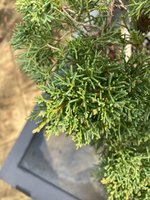 449431086_2183431595376340_4805030751170046323_n.jpg246.2 KB · Views: 75
449431086_2183431595376340_4805030751170046323_n.jpg246.2 KB · Views: 75 -
 449114780_510080838260289_7795428596111685318_n.jpg238.1 KB · Views: 73
449114780_510080838260289_7795428596111685318_n.jpg238.1 KB · Views: 73 -
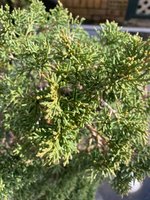 449404016_1977003076084884_7588552130159278815_n.jpg268.9 KB · Views: 83
449404016_1977003076084884_7588552130159278815_n.jpg268.9 KB · Views: 83 -
 449752426_840836930862967_3828803752073588518_n.jpg115.4 KB · Views: 88
449752426_840836930862967_3828803752073588518_n.jpg115.4 KB · Views: 88 -
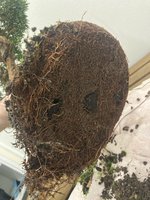 449798086_810398547828894_2334387895972412172_n.jpg124.3 KB · Views: 118
449798086_810398547828894_2334387895972412172_n.jpg124.3 KB · Views: 118
